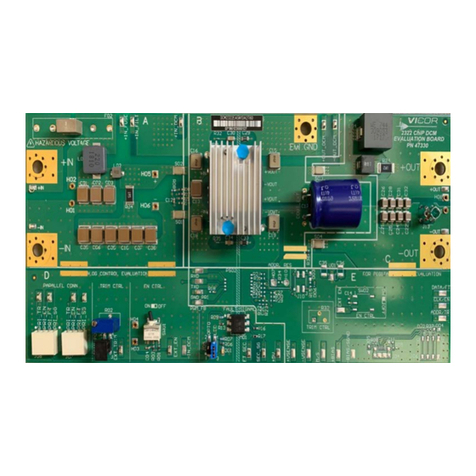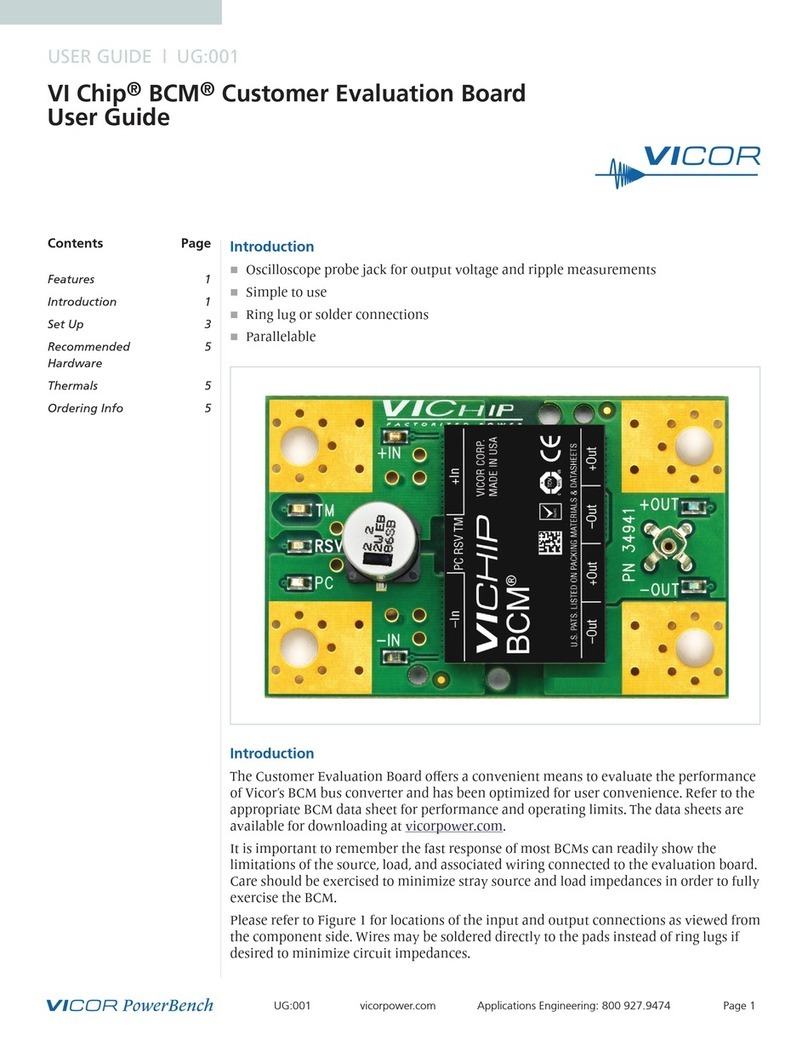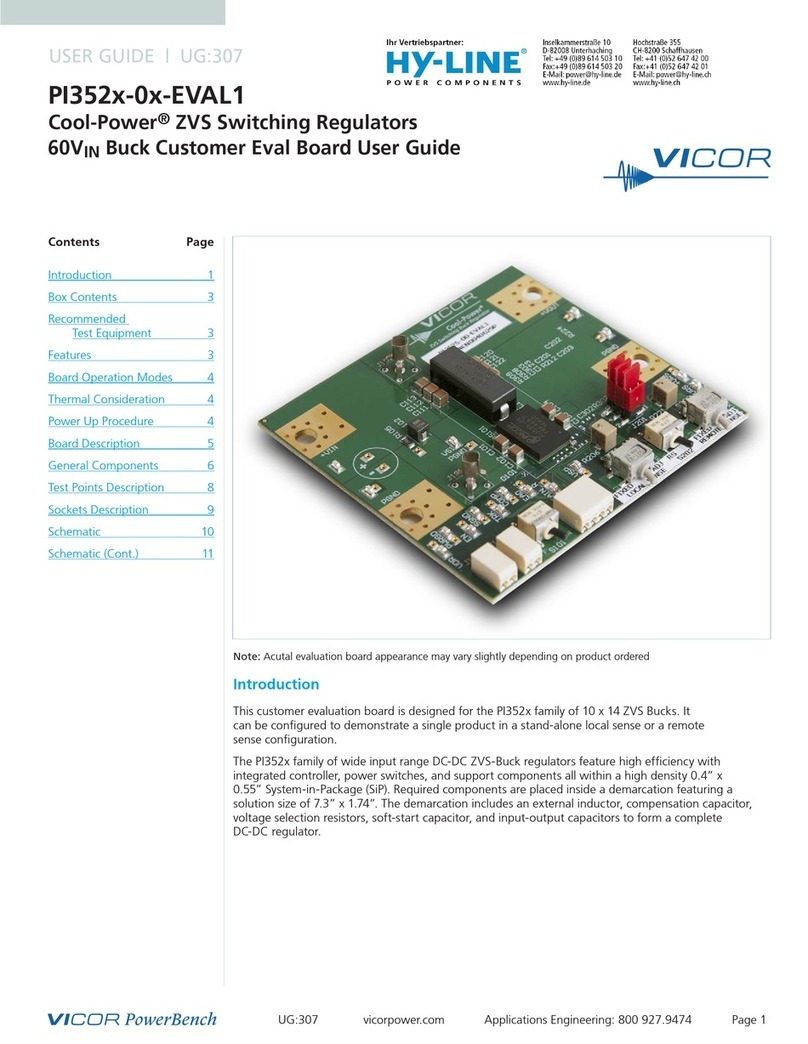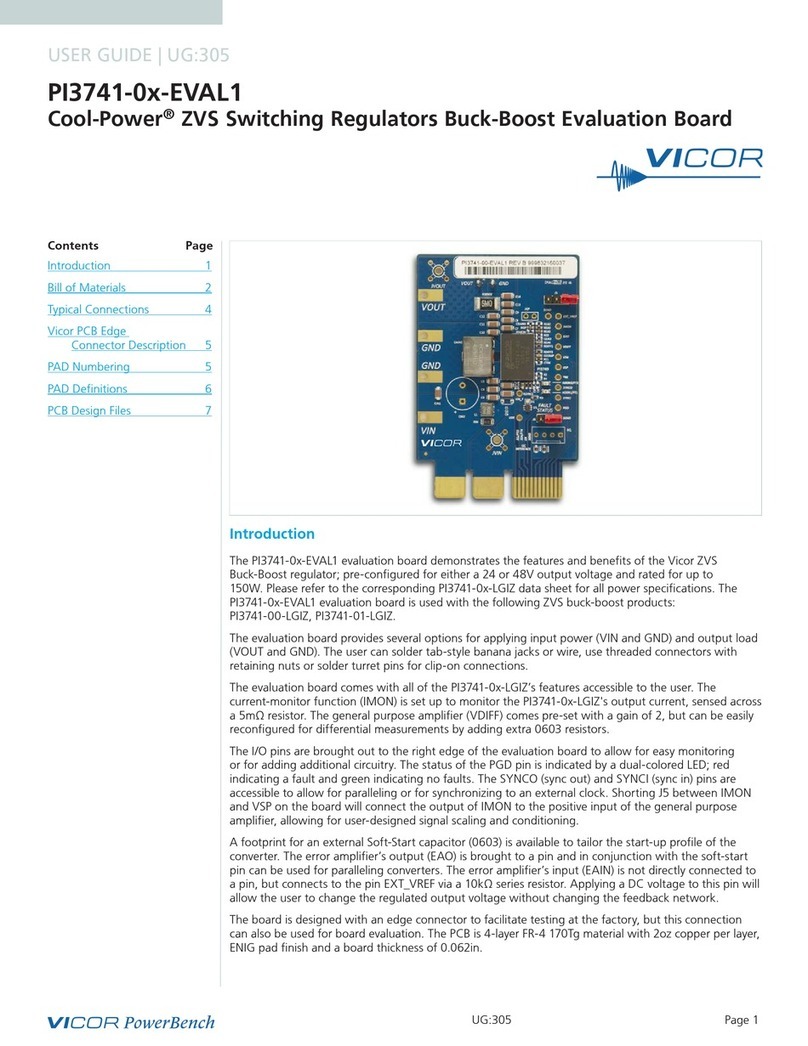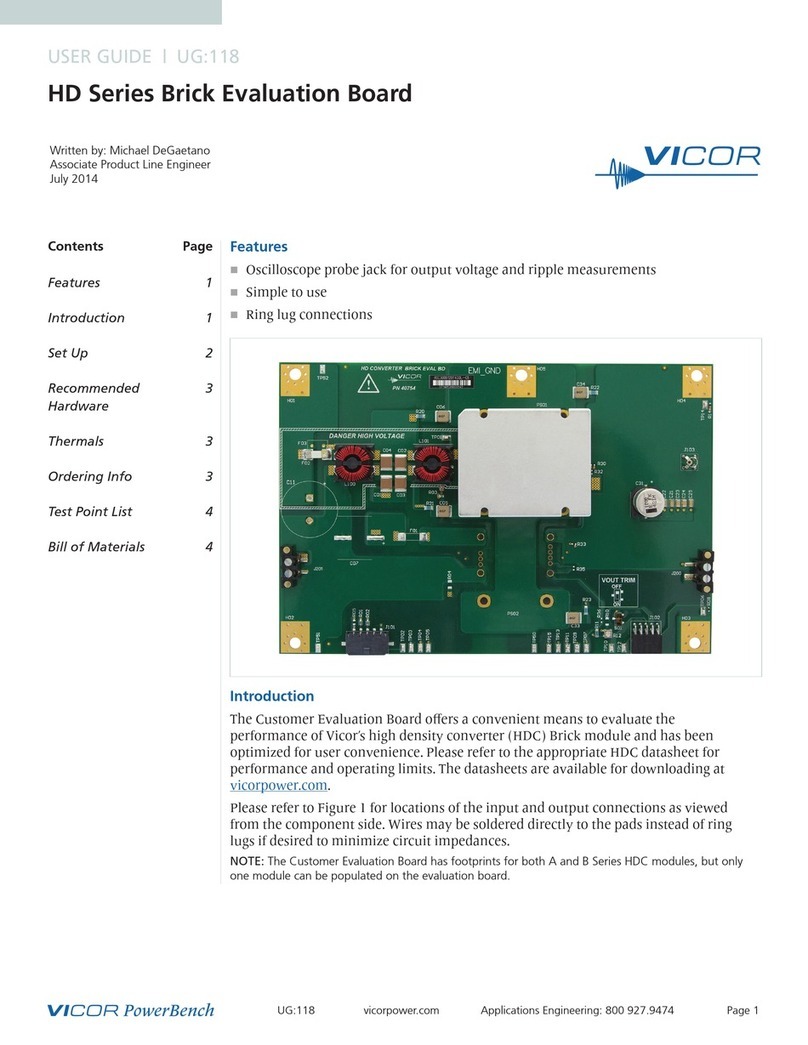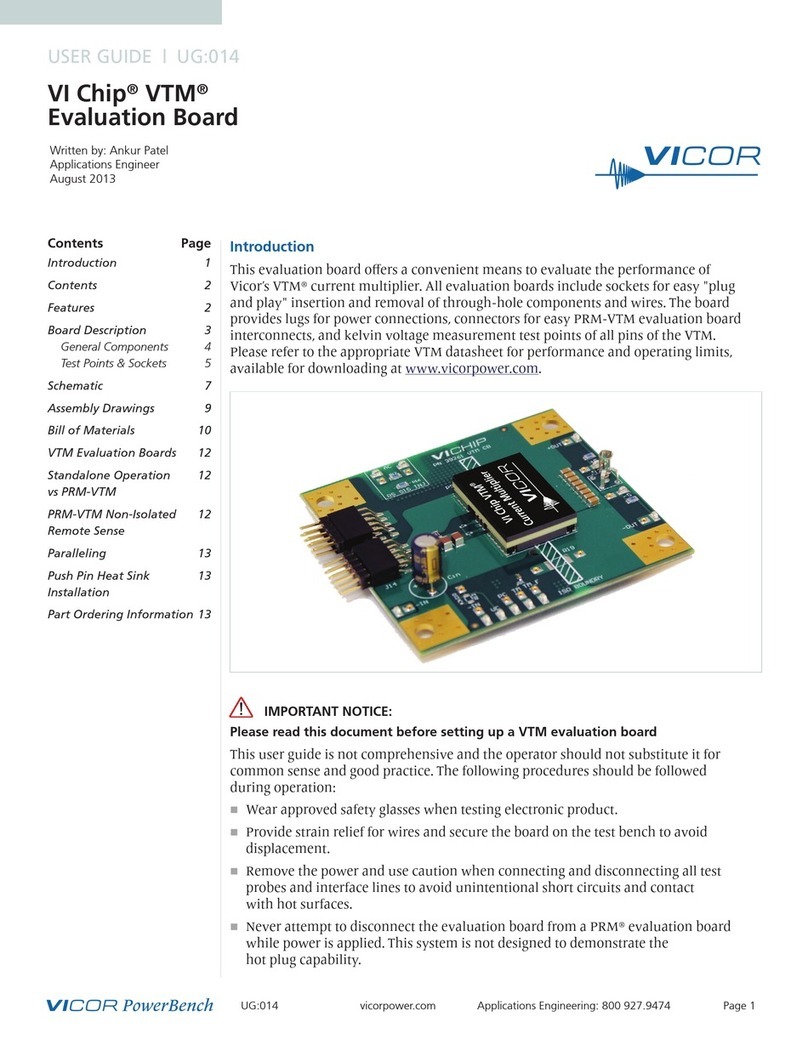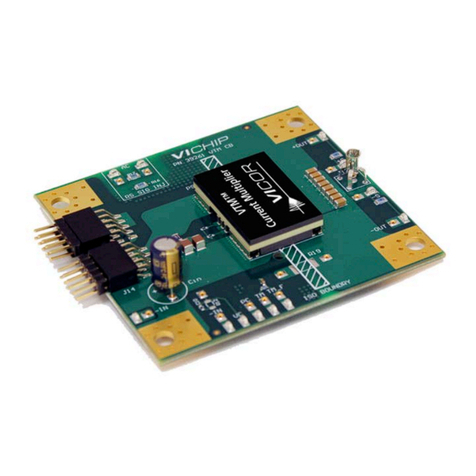
UG:017 vicorpower.com Applications Engineering: 800 927.9474 Page 4
Board Description
The following section provides a detailed description of the evaluation board components, test points
and sockets.
General Components
1. DCM (PS01)
2. Input lugs: Sized for #10 hardware. Use these for making connection to the input source.
This board does not contain reverse polarity protection. Check for proper polarity before
applying the power.
3. Input fuse (F01 & F02): Appropriately rated for the DCM model on the board.
4. Input filter: Ceramic input capacitors (C15-C22), filtering inductor (L01) and damping resistor
(R08) provide input filtering. Sockets (H01-H02, H03-H04) can be used for easy installation of
aluminum-electrolytic input capacitors. The 3623 board also adds H09-H10 for additional
input bypassing.
5. Enable / Disable switch (SW01): When actuator is in top position towards “ON” text on the board,
the ENABLE pin will be open and the DCM will be enabled. When actuator is in bottom position
towards “OFF” text on the board, the ENABLE pin will be connected to SGND and the DCM will be
disabled. When switch SW01 is ON, an external voltage source can control the ENABLE state.
6. Header-jumper for trim control (J09): Provides the option to enable the trim function to set the
DCM programmed trim value via either the on board trim rheostat or an external voltage source:
a. Using potentiometer (R26)
b. Using external voltage source.
7. Output lugs: Sized for #10 hardware. Use these lugs to connect the output directly to the load.
8. Output oscilloscope probe Jack (J01): Used for making accurate scope measurements of the output
voltage (e.g. ripple). The jack is directly compatible with many common passive voltage probes
models. Remove the grounding lead and insulating barrel of the probe and insert the probe tip and
barrel directly into the jack, ensuring that the probe tip seats in the center socket of the jack. To
avoid the risk of an inadvertent short circuit, do not attempt to install while power is applied.
9. Output filter: Output capacitor (C201), filtering inductor (L02) and damping resistors (R16-R17), and
ceramic output capacitors (C02-C05) provide output filtering. Sockets H05-H06, and H03-H04 can
be used for easy installation of aluminum-electrolytic output capacitors.
10. High side current sense wire loops: By depopulating the associated inductor and damping resistors,
all input or output currents can be passed through a wire loop or use with an oscilloscope current
probe. The wire loop is installed at the large pair of plated through-holes near the applicable
inductor location.
11. Dual paralleling wire-to-board connectors (J02 and J03): Used for bussing control signals and their
reference (ENABLE, SHARE, FAULT, and SGND) across board assemblies during parallel operation.
The connector style provides simple “strip and insert” use with 18 – 24 AWG solid wires. Once
inserted, a spring loaded barb retains each wire with no need for soldering. To release the wire,
insert a thin bladed tool (AVX 06-9276-7001-01-000 or similar) into the slot above each
wire entry point.
